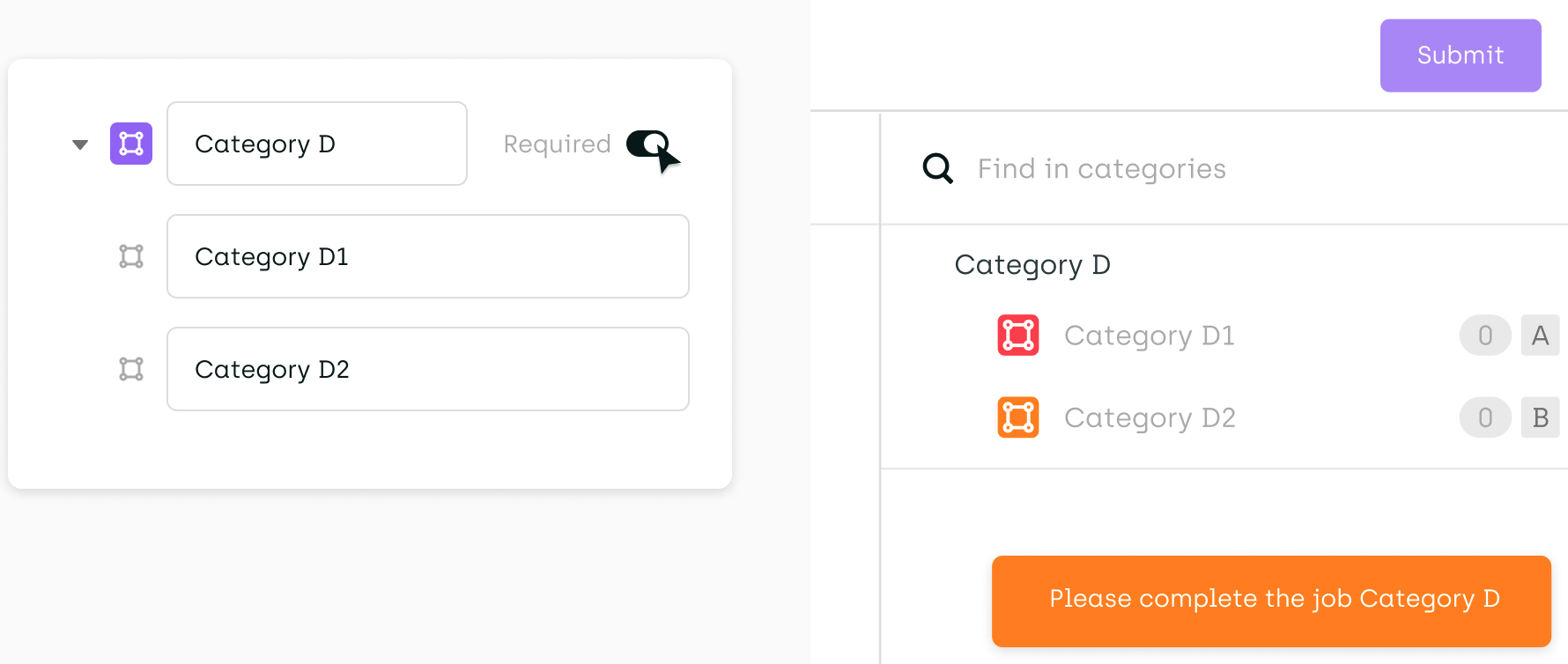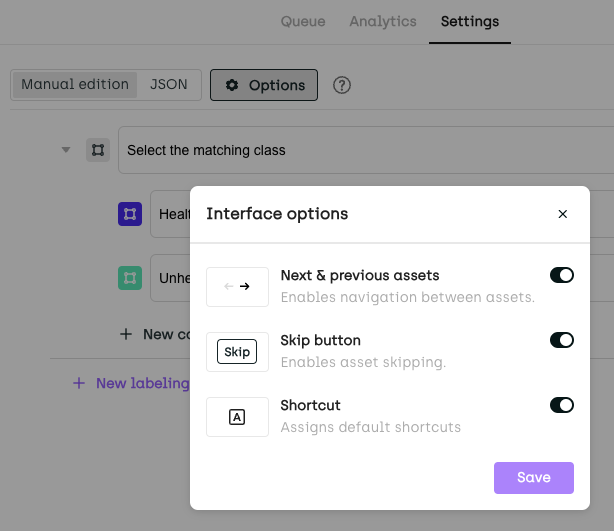Customizing project interface
Labeling job types
Labeling (or annotation) jobs are labeling tasks which are associated with specific tools or input types.
For example, each one of these can be considered a Kili labeling job:
- Classification task with a multi choice dropdown input type
- Object detection task with the polygon tool
- Named entities recognition task
Kili jobs may contain nested subjobs, for example:
- Classification tasks with nested conditional questions
- Object detection tasks with nested transcription containing additional details
Some jobs types may be interdependent. For example, available relations in a named entities relation job will depend on how classes were defined in a named entities recognition job.
Additionally, each job can be either required or optional.

Kili provides the following machine learning job types:
Availability of specific job types depends on your project asset type:
Available labeling job types per asset type
| Labeling job type | Image | Text | Video | |
|---|---|---|---|---|
| Classification | ✓ | ✓ | ✓ | ✓ |
| Object detection | ✓ | ✓ | ✓ | |
| Object relation | ✓ | ✓ | ✓ | |
| Named entities recognition | ✓ | ✓ | ||
| Named entities relation | ✓ | ✓ | ||
| Transcription | ✓ | ✓ | ✓ | ✓ |
Additionally, in transcription jobs, you can impose limits on the allowed input types. For example, allowing only numbers or dates.
Customizing your interface
You can customize your interface through the UI-based interface builder or through JSON settings.
In PDF projects where different pages may represent different document types, transcription and classification tasks can now be defined once and set to repeat on every page of your document. Currently, this can only be configured through the JSON interface.
Other customizations that can only be done using the JSON interface:
- Editing label metadata
- Customizing tagging colors
For details, refer to Customizing the interface through JSON settings.
Customizing the environment for labelers
You can set whether or not the Skip and Jump to next/previous asset buttons will be visible in the labeling interface. Also, you can decide whether or not you want the Kili app to automatically assign keyboard shortcuts to your labeling jobs.
To do that, go to your project Settings -> Interface and then click on Interface options.

- If you disable automatic shortcuts, only custom shortcuts will be available and if you fail to configure them, your labelers will be forced to label manually.* If you first configure custom shortcuts and then enable automatic shortcut assignment, your custom shortcuts will stay the same (they will not get overwritten by the Kili app).
Learn more
For a list of best practices, refer to Best practices for ontology design.
Updated about 2 months ago